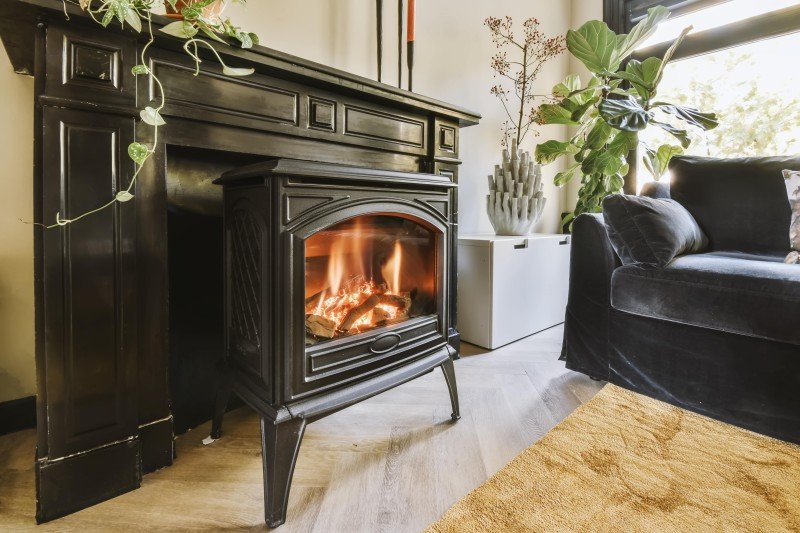How Freestanding Stoves For Sale Became The Hottest Trend Of 2024
Freestanding Stoves for Sale: The Ultimate Guide
Freestanding stoves, likewise called standalone stoves, are a progressively popular option for homeowners seeking to boost the heating efficiency and aesthetic appeal of their living spaces. They are available in a myriad of designs, sizes, and fuel alternatives, supplying versatility to fulfill the varied requirements of customers. This post checks out various elements of freestanding stoves, including their advantages, types, and features, in addition to a guide to purchasing the right range.
What is a Freestanding Stove?
A freestanding range is a heating device that is not developed into a wall or cabinets. Rather, it stands separately in a space and can be positioned in various places, making it a flexible heating solution. These stoves can make use of various fuels, such as wood, gas, or pellets, and are created to offer heat while enhancing the atmosphere of a space.
Advantages of Freestanding Stoves
Freestanding stoves are favored for a number of factors:
- Heating Efficiency: Freestanding stoves can produce substantial heat output while being fuel-efficient.
- Aesthetic Appeal: With various styles ranging from traditional to contemporary, they can be a centerpiece in any room.
- Installation Flexibility: They can be positioned in varied places, permitting for simple integration into existing home layouts.
- Affordable: Many freestanding stoves are less costly to set up compared to built-in systems.
- Heat Distribution: They can successfully distribute heat through the convection procedure, heating up the surrounding location.
Types of Freestanding Stoves
Freestanding stoves come in different types based upon their fuel source, including:
Type
Description
Wood Stoves
Use traditional wood logs for fuel, using a rustic appeal and an unique ambiance.
Gas Stoves
Operate using gas or gas, supplying convenient and controllable heating.
Pellet Stoves
Use compressed wood pellets as fuel, understood for their efficiency and eco-friendliness.
Electric Stoves
Usage electrical energy as a power source, readily available in different styles, frequently including modern styles.
Secret Features to Consider
When shopping for a freestanding range, several features must be considered:
- Heat Output (BTUs): Consider the size of the location you desire to heat and choose a range with a suitable BTU ranking.
- Size and Design: Ensure the range fits the space and matches the room's decor.
- Fuel Type: Decide on the most hassle-free and cost-effective fuel type for your household.
- Efficiency Ratings: Look for the stove's efficiency ratings (like EPA certification for wood stoves) to ensure you're making an environment-friendly choice.
- Security Features: Consider designs with safety features such as vehicle shut-off, heat resistant glass, or low-clearance alternatives.
Acquiring a Freestanding Stove
When considering buying a freestanding stove, it is necessary to evaluate a number of important aspects to guarantee you invest wisely:
1. Budget
Setting a clear spending plan is essential when buying a freestanding range. Prices can differ commonly based on the type, brand name, and features:
- Basic Models: ₤ 800 – ₤ 1,500
- Mid-Range Models: ₤ 1,500 – ₤ 3,000
- High-End Models: ₤ 3,000 – ₤ 6,000+
2. Research Study Brands and Models
Thorough research study can help you reveal numerous alternatives in the market. Some notable brands in the freestanding stove industry include:
- Jøtul
- Quadrafire
- Regency
- Lopi
- Harman
3. Seek advice from Reviews
Check out customer evaluations and expert scores online to gain insights into the performance and reliability of various designs.
4. Regional Regulations
Inspect regional building codes and guidelines relating to stove setup, particularly for wood and gas stoves, to guarantee compliance.
5. Installation
Consider expert setup, particularly for gas or wood models, as they typically need unique ventilation or flue systems.
Frequently Asked Questions About Freestanding Stoves
1. Are freestanding Fireplaces And Stove to utilize?
Yes, when appropriately installed and kept, freestanding stoves are safe. Nevertheless, it's important to follow the producer's guidelines and local codes.
2. How do I preserve my freestanding range?
Regular maintenance consists of cleaning up the flue or chimney, looking for obstructions, and making sure all elements are functioning correctly. Annual inspections by a qualified specialist are recommended.
3. Can I use a freestanding range as a main heating source?
Yes, lots of house owners utilize freestanding stoves as primary heating sources, specifically in locations where traditional heating may be limited.
4. Are freestanding stoves energy-efficient?
Numerous newer models are designed for high efficiency, providing much better heat retention and lower emissions compared to older designs.
5. What is the typical life expectancy of a freestanding range?
With appropriate upkeep, the typical lifespan of a high-quality freestanding range can be around 15 to 20 years.
Freestanding stoves are a useful and elegant alternative for heating homes. By comprehending the different types, benefits, and includes available, homeowners can make informed decisions that fit their preferences and heating requirements. Whether choosing a wood, gas, pellet, or electric stove, investing in a quality design will provide warmth, ambiance, and fulfillment for several years to come.
